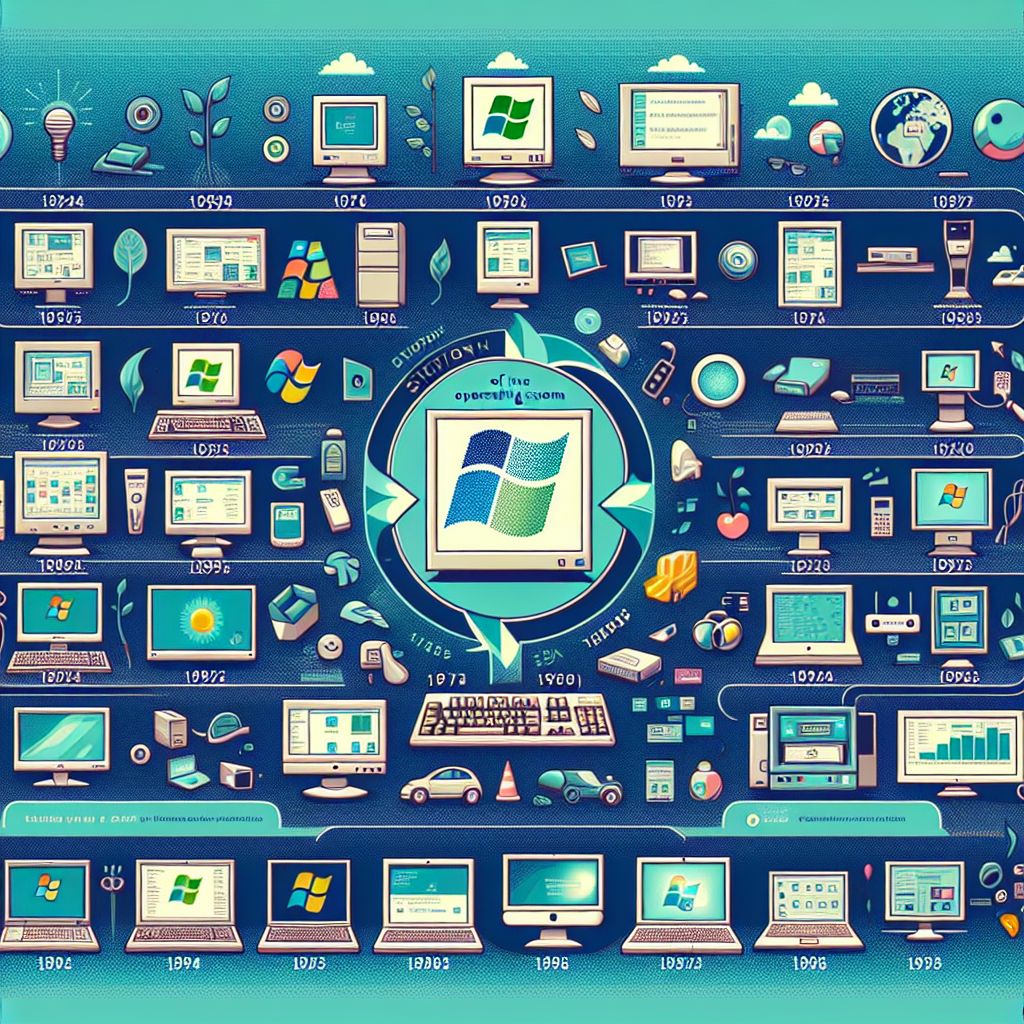The Evolution of Windows: From 95 to 11 - What’s Changed?
June 20, 2025

The Evolution of Windows: From 95 to 11 - What’s Changed?
Since the launch of Windows 95 in August 1995, Microsoft has been at the forefront of the personal computer revolution, vastly changing the way we interact with technology. With each new version, Windows has evolved significantly, adapting to the needs of users and technological advancements. Here’s a look at the evolution of Windows from 95 to Windows 11, highlighting the key changes that have occurred over the years.
Windows 95: The Game Changer
Windows 95 was revolutionary for its time. It introduced the Start menu, taskbar, and minimize/maximize/close buttons—a radical departure from earlier versions. It also provided plug-and-play hardware support, making it easier to install peripherals. With its user-friendly interface and robust capabilities, Windows 95 laid the foundation for the modern computing era and became a pivotal point for software developers and users alike.
Windows 98: Internet Integration and Improved Hardware Support
Released in 1998, Windows 98 built upon its predecessor's foundation. It integrated internet capabilities more seamlessly with the inclusion of Internet Explorer. Additionally, it improved hardware support, enabling smoother use of USB devices and better management of system components. Windows 98 succeeded in creating a more cohesive user experience, welcoming internet-savvy users into the fold of personal computing.
Windows XP: Stability and Usability
Launched in 2001, Windows XP became one of Microsoft’s most beloved systems. It combined the robustness of Windows NT with the user-friendly nature of Windows 95. The interface was visually appealing with a new design and fewer crashes. Windows XP set the standard for security measures and included the Windows Firewall, starting a focus on user privacy and safety within the operating system.
Windows Vista: A New Look and Enhanced Security
Despite its mixed reception in 2007, Windows Vista was significant for its Visual User Interface (Aero), which revamped the look and feel of Windows. Enhanced security features were a cornerstone, including User Account Control to limit accidental system changes. While Vista faced criticisms for performance issues, it paved the way for the development of a more secure Windows ecosystem.
Windows 7: The Resurgence
Windows 7, released in 2009, addressed many of the concerns with Vista. Its streamlined interface and improved performance made it a hit among users. With features like Snap, Taskbar previews, and better support for touch input, Windows 7 reinvigorated the Windows lineup and solidified Microsoft’s place in the market as a user-friendly platform.
Windows 8: A Bold Shift to Touch
In 2012, Microsoft introduced Windows 8, marking a significant shift towards touchscreen functionality and the introduction of the Start Screen. While innovative, the dramatic changes drew mixed reactions, with users either embracing the new design or struggling with its radical departure from traditional desktop environments.
Windows 8.1: Smoothing the Edges
To address the mixed feedback, Microsoft released Windows 8.1 in 2013, which included improvements like the return of the Start button, better navigation, and enhancements to multitasking. This version sought to balance touch and traditional desktop users more effectively.
Windows 10: A Unified Experience
Released in 2015, Windows 10 was touted as the last version of Windows, with Microsoft committing to regular updates. The inclusion of the virtual assistant Cortana, a revamped Start menu, and support for universal apps marked a new generation for Windows. Windows 10 aimed to unify the experience across all devices, from desktops to tablets to Xbox.
Windows 11: An Elegant Redesign
The latest release, Windows 11, unveiled in 2021, takes the evolution of the Windows operating system to new heights with a redesigned user interface featuring a centered Start menu, new layouts for multitasking (Snap Layouts), and enhanced gaming features. It embraces modern aesthetics while advancing security and performance. Windows 11 aims to create a more streamlined and productive experience for users, especially in this remote and hybrid work environment.
Conclusion
The journey from Windows 95 to Windows 11 encompasses impressive advancements in technology, design, and user experience. Each version reflects a response to user feedback and the shifting landscape of technology, aiming to meet the ever-changing needs of its users. Today, as we witness the latest developments, it’s essential to consider the benefits of upgrading to the latest versions of Windows, not just for improved features but also for enhanced security.
At SoftwareDeals.com, we offer genuine software from Microsoft and more, ensuring you get the best deals for your systems. With instant downloads and secure licensing, we guarantee a trusted service that has been reliable for over 26 years. Explore our collection today and experience the evolution of Windows firsthand!
